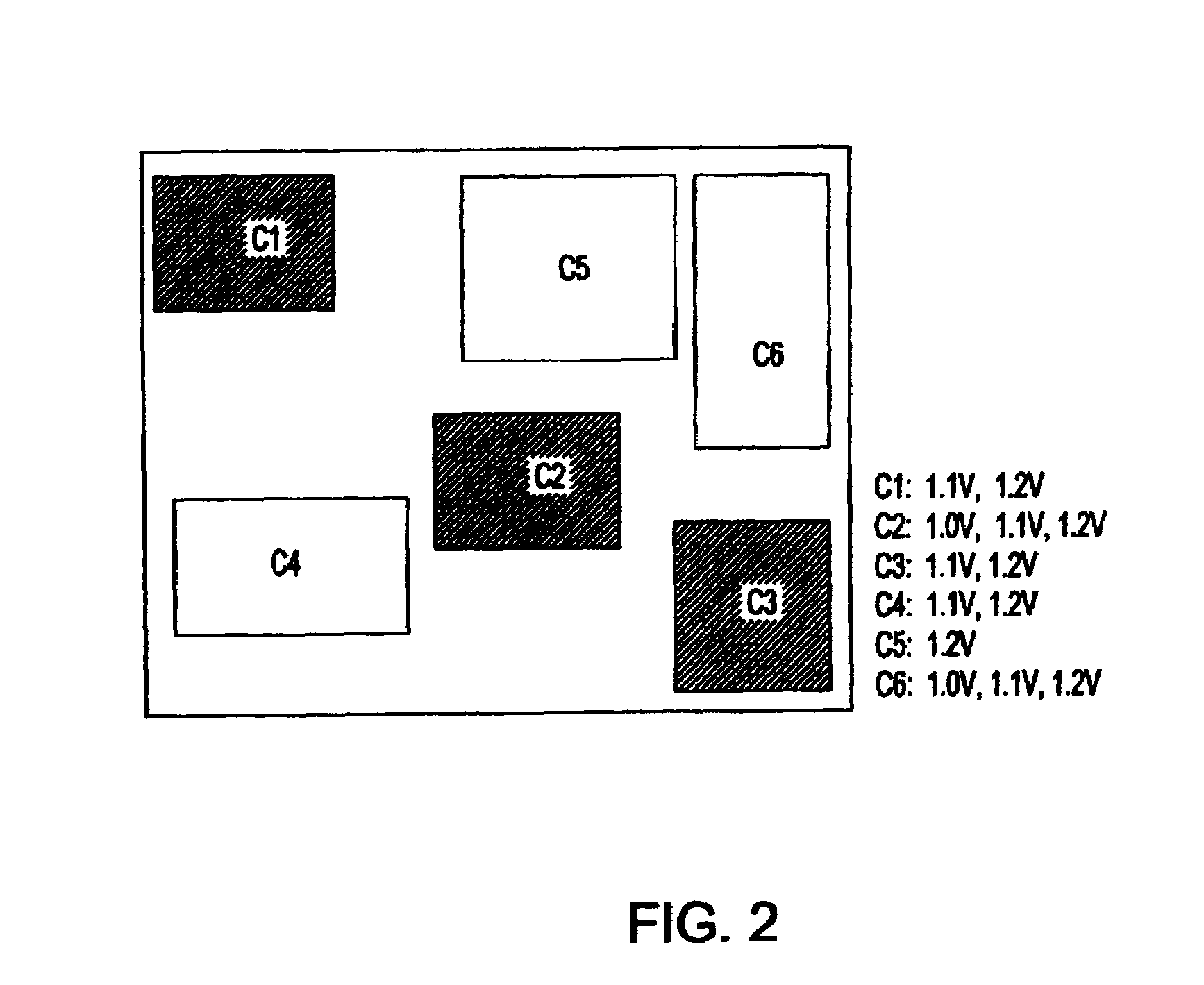Method of physical planning voltage islands for ASICs and system-on-chip designs
a technology of voltage islands and asics, applied in the field of automatic design of integrated circuit chips, can solve the problems of reducing circuit performance, power consumption becoming a critical design metric, and difficulty in meeting the timing requirements of modem system-on-a-chip designs, and achieve the effect of minimizing the overall power consumption of the design
- Summary
- Abstract
- Description
- Claims
- Application Information
AI Technical Summary
Benefits of technology
Problems solved by technology
Method used
Image
Examples
Embodiment Construction
[0022]FIG. 1 shows the outline of the overall design flow when using the voltage island physical planning methodology of the present invention. If the netlist is flat, partitioning is performed such that each partition consists of only latch-to-latch paths. The result of this partitioning process consists of clusters of cells. This is achieved by first identifying the latches that are closest to the primary outputs (POs) followed by creating fan-in cones for each latch. This process is repeated for latches closest to the fan-in cones thus generated, and continued until the primary inputs (PIs) are reached. Since many such fan-in cones and overlaps between them exist, it becomes necessary to merge some of the cones based on the number of partitions required and the amount of logic that is cloned in the region of overlap.
[0023]If the input netlist is a SoC like design that is assembled from cores, then the inventive method uses the existing cores as the starting clusters upon which vo...
PUM
 Login to View More
Login to View More Abstract
Description
Claims
Application Information
 Login to View More
Login to View More - R&D
- Intellectual Property
- Life Sciences
- Materials
- Tech Scout
- Unparalleled Data Quality
- Higher Quality Content
- 60% Fewer Hallucinations
Browse by: Latest US Patents, China's latest patents, Technical Efficacy Thesaurus, Application Domain, Technology Topic, Popular Technical Reports.
© 2025 PatSnap. All rights reserved.Legal|Privacy policy|Modern Slavery Act Transparency Statement|Sitemap|About US| Contact US: help@patsnap.com



